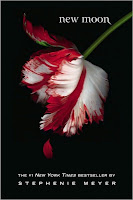Stephenie Meyer - The Twilight Saga
Twilight is a series of vampire-based fantasy/romance/horror novels by American author Stephenie Meyer. It follows the adventures of Isabella Swan, a teenager who moves to Forks, Washington and finds her life turned upside-down when she falls in love with a vampire named Edward Cullen.
The series is currently one of the most popular books written for young adults, with 50 million copies sold worldwide and over 7.7 million copies sold in the U.S. alone. The series has been translated into over 20 different languages around the world.
Film Adaptation: A screenplay for Twilight was written by Melissa Rosenberg and has been adapted into a film by Summit Entertainment. The film is being directed by Catherine Hardwicke, with Kristen Stewart and Robert Pattinson in the leading roles of Isabella Swan and Edward Cullen, respectively. It is set to be released on November 21, 2008.
Book 1 - Twilight (2005)
Twilight is a young adult vampire novel written by author Stephenie Meyer, originally published in hardcover in 2005. It is the first book of the Twilight series, and introduces seventeen-year-old Isabella "Bella" Swan who moves from Phoenix, Arizona to Forks, Washington, and finds her life in danger when she falls in love with a vampire, Edward Cullen.
Book 2 - New Moon (2006)
Legions of readers entranced by Twilight are hungry for more and they won't be disappointed. In New Moon, Stephenie Meyer delivers another irresistible combination of romance and suspense with a supernatural twist. The "star-crossed" lovers theme continues as Bella and Edward find themselves facing new obstacles, including a devastating separation, the mysterious appearance of dangerous wolves roaming the forest in Forks, a terrifying threat of revenge from a female vampire and a deliciously sinister encounter with Italy's reigning royal family of vampires, the Volturi. Passionate, riveting, and full of surprising twists and turns, this vampire love saga is well on its way to literary immortality.
Book 3 - Eclipse (2007)
Readers captivated by Twilight and New Moon will eagerly devour Eclipse, the much anticipated third book in Stephenie Meyer's riveting vampire love saga. As Seattle is ravaged by a string of mysterious killings and a malicious vampire continues her quest for revenge, Bella once again finds herself surrounded by danger. In the midst of it all, she is forced to choose between her love for Edward and her friendship with Jacob --- knowing that her decision has the potential to ignite the ageless struggle between vampire and werewolf. With her graduation quickly approaching, Bella has one more decision to make: life or death. But which is which?
Book 4 - Breaking Dawn (2008)
Breaking Dawn is the fourth and last novel in the Twilight series by Stephenie Meyer. Divided into three 'books', the story is told from the perspective of Bella Swan, except for Book Two which is from the perspective of Jacob Black, Bella's werewolf friend. Breaking Dawn was released on August 2, 2008 with a special midnight release in many bookstores.
Book 5 - The Host
Stephenie Meyer, creator of the phenomenal teen-vamp Twilight series, takes paranormal romance into alien territory in her first adult novel. Those wary of sci-fi or teen angst will be pleasantly surprised by this mature and imaginative thriller, propelled by equal parts action and emotion. A species of altruistic parasites has peacefully assumed control of the minds and bodies of most humans, but feisty Melanie Stryder won't surrender her mind to the alien soul called Wanderer. Overwhelmed by Melanie's memories of fellow resistor Jared, Wanderer yields to her body's longing and sets off into the desert to find him. Likely the first love triangle involving just two bodies, it's unabashedly romantic, and the characters (human and alien) genuinely endearing.
Also Included the Partial Draft of Stephenie Meyer's "Midnight Sun", which is Twilight from Edward Cullen's point of view, revealing details of his own life and existance that were to us unknown, since all the other books are told from Bella's perspective.
TWILIGHT



